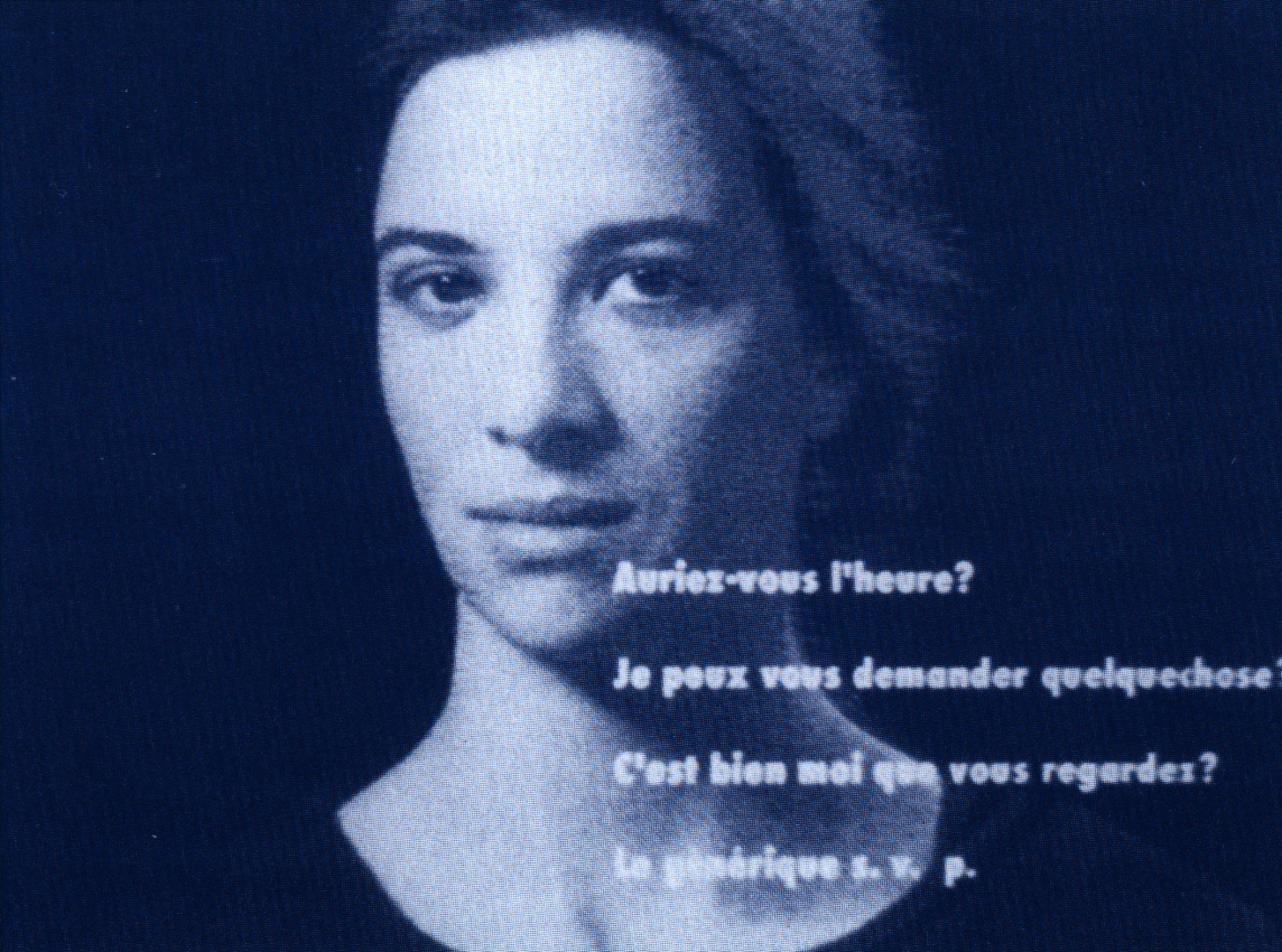“Portrait One” by Courchesne
Conference:
Experience Type(s):
Title:
- Portrait One
Program Title:
- Demonstrations and Displays
Presenter(s):
Collaborator(s):
Project Affiliation:
- Université de Montréal
Description:
“Who wouldn’t distrust someone coming at him saying: ‘Me and my friends are not real, we are a new kind of photograph?”?
Adolfo Biov-Casares
L’invention de Morel, 1952?
A ghost-like image of a woman – Marie, a 34-year-old French-speaking Montrealer played by actress Paule Ducharme – appears to be floating in space. Breathing calmly, she seems lost in reverie. When a visitor approaches, moves a mouse, and clicks “Excuse me!”, Marie suddenly stares. The determined visitor tries to establish rapport by clicking questions: “Do you have the time?” “Are you looking at me?” Or simply: “May I ask you something?” Marie’s responses begin a conversation that develops according to the visitor’s curiosity and Marie’s moods. The encounter may be cut short because of the visitor’s lack of tact, or it may develop into intimate discussions of love in the context of a virtual relation-ship.?
The course of the conversation is determined by the visitor’s choices from a set of approximately 300 options and a bank of 120 video segments. The initial question defines the language of the conversation: French or English. In the English version, Marie’s answers are delivered in French with subtitles. Portrait One is the first of a series of six interactive video portraits using the same hardware and software configuration: a 30-minute videodisc (Laservision CAV/NTSC), a television monitor, and HyperCard stacks on a Macintosh computer. The subject is fic-tional. All the dialogues were writ-ten, and the programming was done, before the video was shot. Subsequent portraits in the series document existing people. In these works, the construction process is different. The subject is recorded during an interview session, and the final parameters of the virtual conversation are constructed in the last stages of the process.?
Despite the evident limitations of the technology and the awkwardness of the interface, in which the visitor “talks” using a mouse, the system creates an impression of presence and demonstrates the engaging potential of current technologies. Comments on Portrait One have emphasized that Marie is a haunting presence despite the system’s limited interactive options and suggested that the experience demonstrates, among other things, the limited scope of the average conversation. Some visitors have confessed to falling in love with her. The installation has even been referred to as a “romantic machine” The Macintosh and HyperCard provide a system that offers a photorealistic rendering of the subject, simplifies the design process, facilitates the presentation of the work, and permits its publication. Although this hypermedia portrait toolkit is not as simple to use as an instant camera. it could contribute to the development of a new genre of portrait art, in the same way as the introduction of the camera and photo-sensitive materials did in the 19th century. In addition to the “recording” of living individuals, possible applications of the principles of hypermedia portraiture include “respectable” information agents, dedicated lecturers, engaging conversational partners for language lessons, tutorials, or therapy. Because it renders facial features and expressions in photographic quality and can reproduce natural movements, computer video technology will humanize machines. Human-like characters will become the visible end of hidden expert systems or actors in a new kind of theater where the spectator becomes a part of the drama.?
With present technology, the impression of “intelligence” is generated by the complexity of the branching structure, but applications of artificial intelligence to hypermedia portraiture would free the visitor from the constraints of a pre-established set of elements and pathways, and enhance an impression of spontaneity. Other improvements would integrate speech and movement recognition with the system’s interface to allow more natural behavior on the user’s part and a stronger illusion of the subject’s presence.?
Ultimately, it may be possible to break open the isolation of the virtual subject by creating links between a family of virtual subjects. In this enriched concept of the hypermedia portrait, a virtual society of portraits could meet a society of visitors in a context of genuine complexity and potential surprise for everyone.?????
Other Information:
Hardware: Macintosh, videodisc player, television monitor
Software: HyperCard
Application: Education, entertainment
Type of System: Player, single-user
Interaction Class: Desktop/vehicle





